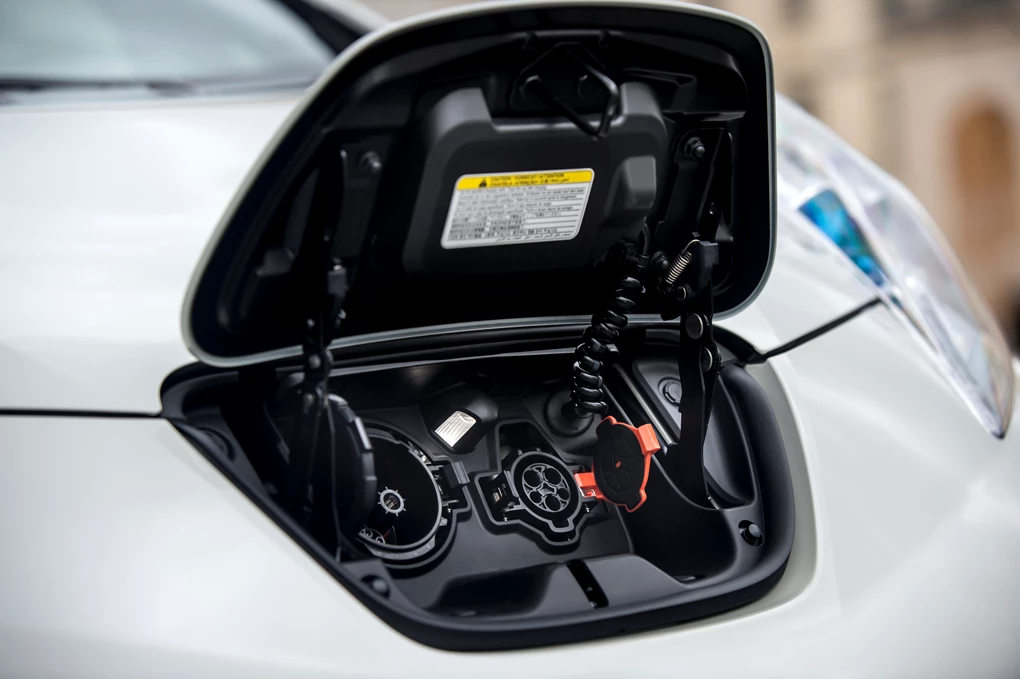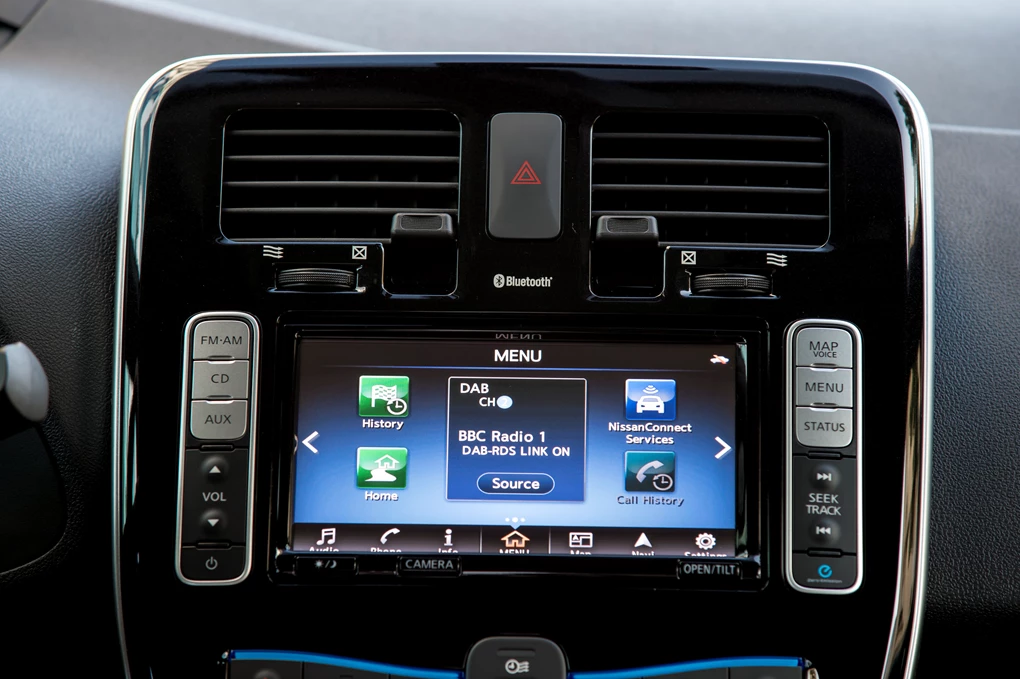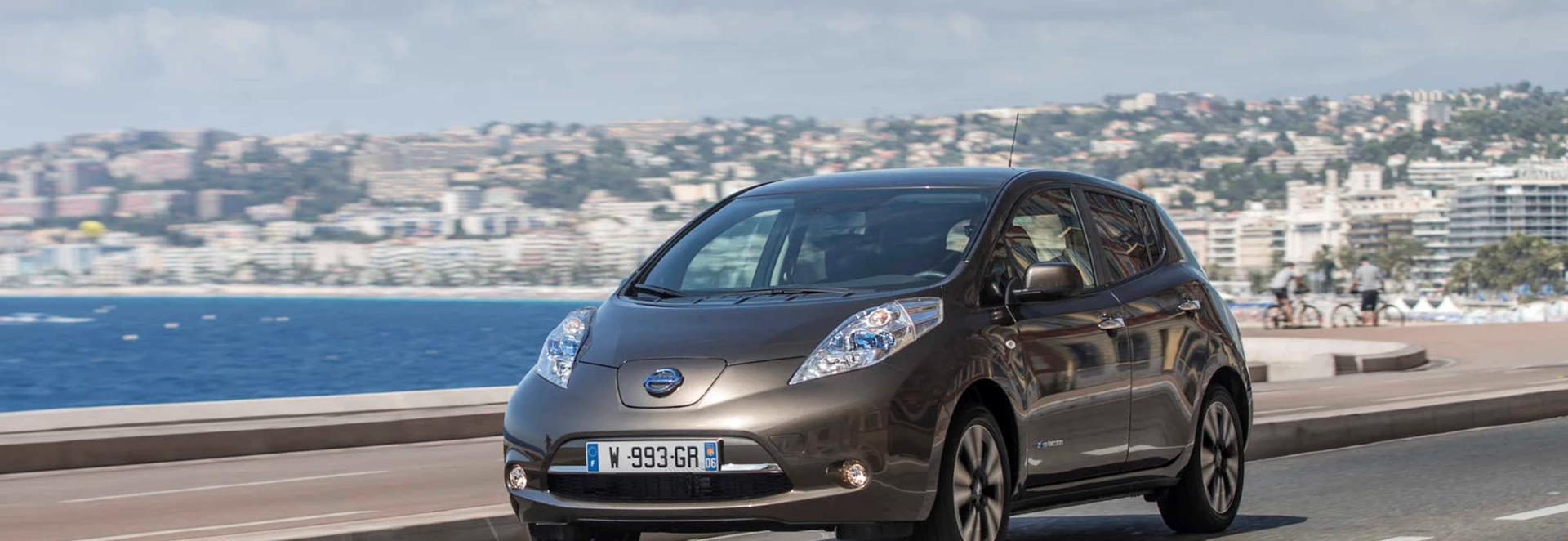Statistically, the LEAF is the best-selling electric car to date – and with its ‘conventional’ hatchback practicality, it is easy to see why.
In 2013 Nissan’s electric poster boy was given a facelifted, with over 100 changes made according to the carmaker. Highlights include the introduction of three trim levels, a moved charging point for easier access and a new driving mode, which increases brake energy recuperation.
Since the LEAF’s launch back in 2011, the marketplace has been flooded with competitors, including the likes of the BMW i3, so it will be interesting to see if Nissan’s formula still works.

Performance
All torque, that’s the LEAF. As soon as you press on the throttle, you have 254Nm of torque at your toes, and that’s the great thing about having an electric battery as your power source – there’s no waiting on a turbo to kick in.
The LEAF produces 108bhp, which is ample for this kind of car as it is never going to be used much on long journeys. This is a car to be kept in and around the city.
On the open road, the Nissan achieves the 0-62mph benchmark in 11.5 seconds and complete its run at a maximum of 89mph. However, stay at motorway speeds for a long period and you will see your battery life reduce rapidly. A charging point will be needed enroute if you are thinking of driving enthusiastically, and you’ll almost certainly suffer from range anxiety.
Tthere are three different ways you can charge - from a household three-pin socket, from a fast charger station or from a rapid charger. If you are charging at home from a standard socket it will take around 12 hours. Have a fast charger station installed in your home and this can be cut to 4 hours. Plug-in at a rapid charger station though and you can achieve 80 per cent battery capacity in just 30 minutes.
When it comes to range, Nissan claims 124 miles from a single charge when the 24kWh battery is specified. However Nissan has introduced a new 30kWh battery which claims to offer a range of 155 miles. Whether or not this range is achievable will depend on a series of different factors, including weather conditions, road conditions and driving style.
In terms of charging time, the new 30kWh battery takes anywhere from one to two hours longer than the 24kWh battery. However, charging time remains unchanged if you are using a rapid charger.

Ride and Handling
The i3, to be fair, is smaller than the LEAF, but dynamically the chassis feels better and there is also much more feedback from the BMW.
The great thing about the LEAF is that it handles much like a conventionally-powered family car, with a supple suspension to make journeys comfortable and trouble free. Until BMW brought out the i3, the LEAF was easily the best handling electric car on the market. BMW has now taken that crown. The i3, to be fair, is smaller than the LEAF, but dynamically the chassis feels better and there is much more feedback from the BMW. Behind the wheel, it does generally feel like a conventional family car. However, body roll on the LEAF is quite noticeable even though it’s not a particularly tall car. The steering also lacks in feel but these issues are not as noticeable when driving within a town, the LEAF’s ideal environment.

Interior and Equipment
The Nissan LEAF was the winner of the 2011 World Car of the Year award. The same year the LEAF was also named European Car of the Year.
The seats in the LEAF feel comfortable and the cabin is overall nicely refined. You also get 370 litres of boot space as standard (the facelift brought another 40 litres with it), which is more than some conventional family hatchbacks like the Ford Focus (316 litres). Acenta is the most popular trim and it is easy to see why as it comes with useful kit like cruise control and a colour reversing camera. The flagship Tekna trim adds a Bose sound system and Nissan’s Around View Monitor. Its 2013 facelift saw the addition of black upholstery, a little more mainstream than the white cloth you may be used to seeing. Another update that took place in 2015 is the addition of the NissanConnect system. This adds smartphone-like pinch and swipe features as well as a new tool that allows you to check the availability of nearby charging stations. A feature definitely worth checking out is the CarWings app, which you can download for your smartphone. This allows you to check the charging status of the LEAF and even control things like climate control remotely from the comfort of your living room.
Cost
If you opt for a fast charging station to be installed in your home, it will cost you an extra £200.
Although you will certainly save on running costs, the LEAF is hardly cheap to buy. It comes in at just over £16,000 – but that is without the battery, which costs an additional £5,000 or £70 a month if you lease it.Although you will certainly save on running costs, the LEAF is hardly cheap to buy. It comes in at just over £16,000 – but that is without the battery, which costs an additional £5,000 or £70 a month if you lease it. That means prices start from around £20,790 for the 24kWh model and £24,490 for the 30kWh one. Also, if you opt for a fast charging station to be installed in your home, it will cost you an extra £200. Compared to popular hatchbacks like the Volkswagen Golf and Ford Focus, the LEAF definitely comes out as a costly option. But compared to similar electric models like the BMW i3, the LEAF doesn’t seem all that expensive.
Our Verdict
The Leaf will never be as popular as a Ford Focus or VW Golf but, it is an interesting insight into the future. The way the LEAF drives is not that dissimilar to a conventional powered car, and it feels comfortable and easy particularly in an urban environment. It also feels spacious and reasonably well-equipped. However, the lack of charging points and a range even more limited than what is claimed, severely limits the LEAF’s feasibility. But, for a select few, who aren’t put off by these hurdles, and that price, it’s not a bad car to tootle about in.




